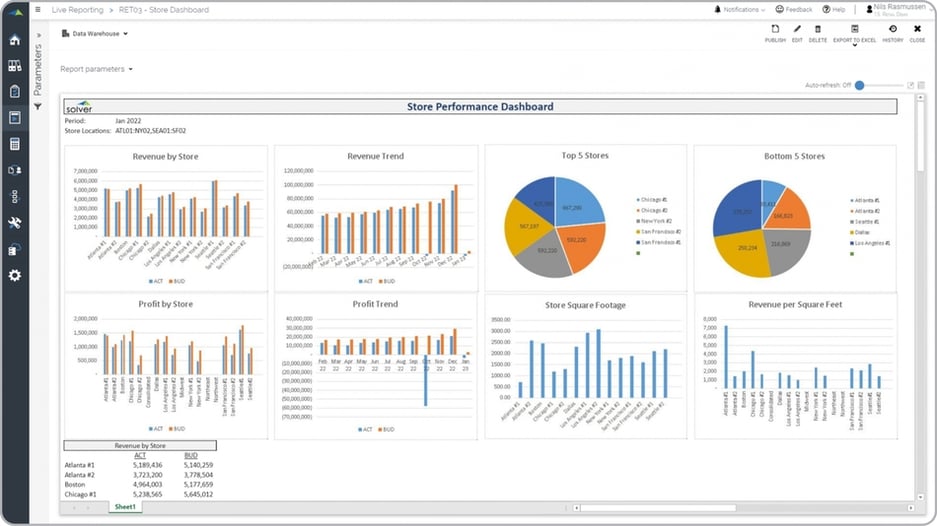Written by Nils R. | Jan 18, 2021 8:00:00 AM
What is a Store Performance Dashboard for a Retail Company ? Store performance reports are considered operational dashboards and are used by corporate offices and regional managers to analyze store sales and to benchmark performance. Some of the main functionality in this type of dashboard is that it it compares actual and budget revenues and profit across stores. It also shows the monthly trend for these two metrics. The two pie charts displays the top 5 and bottom 5 store locations. The dashboard also shows square foot per store and revenue per square foot per store. You find an example of this type of dashboard below. Purpose of Store Performance Dashboards Retailers use Store Performance Dashboards to make it easy for managers to analyze and benchmark KPIs across a chosen group of store locations. When used as part of good business practices in a retail operations department, a company can improve its decision-making related to store management, products and other performance variables as well as reduce the chances that executives don’t have good visibility to the large variations in store performance as soon as numbers are available. Store Performance Dashboard Example Here is an example of a Store Performance Dashboard with budget variance analysis and benchmarking. 

- Native ERP report writers and query tools
- Spreadsheets (for example Microsoft Excel)
- Corporate Performance Management (CPM) tools (for example Solver)
- Dashboards (for example Microsoft Power BI and Tableau)
- View 100’s of reporting, consolidations, planning, budgeting, forecasting and dashboard examples here
- Read more about Retail solutions here
- See how reports are designed in a modern report writer using a cloud-connected Excel add-in writer
- Discover how the Solver CPM solution delivers financial and operational reporting
- Discover how the Solver CPM solution delivers planning, budgeting and forecasting
- Watch demo videos of reporting, planning and dashboards
